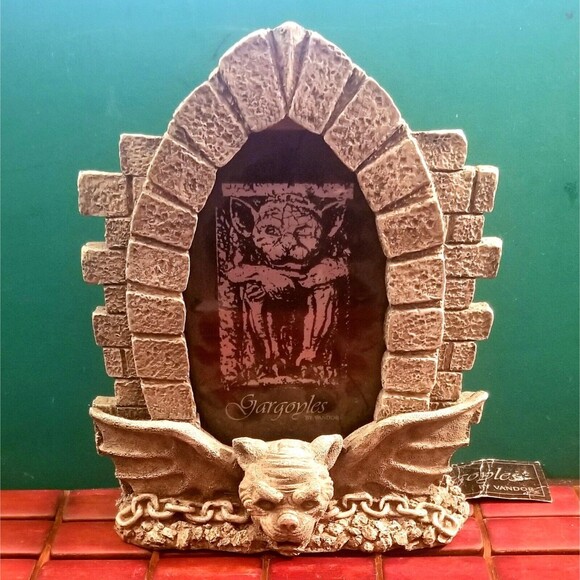
Museum Resilience: Adaptive Planning for a New Era
 Limited Time Sale
Limited Time Sale$15.95 cheaper than the new price!!
Free cash-on-delivery fees for purchases over $99
Product details
| Management number | 201899437 | Release Date | 2025/10/08 | List Price | $15.96 | Model Number | 201899437 | ||
|---|---|---|---|---|---|---|---|---|---|
| Category | |||||||||
Museum Resilience offers a multiple-scenario planning method for expanding inclusivity, decolonization, and adapting to visitation and financial challenges, with unique features such as explaining worldview differences, value-based planning techniques, and developing learning programs that support cultural continuance. The author has field-tested these methods for 30 years and integrated examples of potential roles museums can take in opening environmental awareness.
Format: Paperback / softback
Length: 284 pages
Publication date: 26 April 2024
Publisher: Rowman & Littlefield
Museum Resilience: Expanding Inclusivity and Decolonization Efforts, Adapting in a Time of Visitations and Financial Challenges
Museum Resilience is a comprehensive guide to expanding inclusivity and decolonization efforts, adapting in a time of visitation and financial challenges, and developing learning programs that support cultural continuance. The book offers unique features such as explaining worldview differences, value-based planning techniques, the specifics of expanding museum income through collaborations, and ways of developing learning programs that support cultural continuance. The author has field-tested these methods for 30 years, blending her graduate degrees in Cultural Anthropology and Urban and Regional Planning to design methods for cross-cultural planning. Integral to the book are planning processes for museums to use with communities in addressing these issues. Each chapter contains an annotated "Further Readings" feature, useful for textbook readers. Another feature of the book is the integration of examples concerning potential roles museums can take in opening environmental awareness. The author is an experienced leader in culturally diverse issues, focusing on value-based planning and designing techniques that work across cultures.
The book begins by exploring the concept of worldview differences and how they impact museum planning. It then discusses value-based planning techniques, including adaptive and multiple-scenario planning, and how they can be used to create more inclusive and decolonized museums. The author also provides detailed information on expanding museum income through collaborations, such as partnerships with local businesses, foundations, and government agencies.
One of the key features of Museum Resilience is its emphasis on developing learning programs that support cultural continuance. The author argues that museums can play a vital role in preserving and promoting cultural heritage, and that learning programs can help to achieve this goal. The book provides examples of successful learning programs that have been implemented in museums around the world, and offers practical advice on how to develop and implement these programs.
Another important aspect of Museum Resilience is its focus on addressing visitation and financial challenges. The author provides strategies for museums to increase their visibility and attract more visitors, as well as ways to manage their finances effectively. The book also includes case studies of museums that have successfully navigated these challenges, and offers insights into how they achieved their success.
Throughout the book, the author emphasizes the importance of collaboration and partnership. She argues that museums cannot achieve their goals alone, and that they must work with communities, other museums, and government agencies to create a more inclusive and sustainable cultural landscape. The book provides examples of successful collaborations and partnerships, and offers practical advice on how to build and maintain these relationships.
In addition to its practical advice, Museum Resilience is also a thought-provoking and engaging read. The author's writing style is clear and concise, and she provides numerous examples and anecdotes to illustrate her points. The book also includes a glossary of terms and a bibliography of resources for further reading.
Overall, Museum Resilience is a valuable resource for anyone interested in expanding inclusivity and decolonization efforts, adapting in a time of visitation and financial challenges, and developing learning programs that support cultural continuance. The book's unique features, practical advice, and thought-provoking content make it an essential read for anyone working in the museum field.
Museum Resilience: Expanding Inclusivity and Decolonization Efforts, Adapting in a Time of Visitations and Financial Challenges
Museum Resilience is a comprehensive guide to expanding inclusivity and decolonization efforts, adapting in a time of visitation and financial challenges, and developing learning programs that support cultural continuance. The book offers unique features such as explaining worldview differences, value-based planning techniques, the specifics of expanding museum income through collaborations, and ways of developing learning programs that support cultural continuance. The author has field-tested these methods for 30 years, blending her graduate degrees in Cultural Anthropology and Urban and Regional Planning to design methods for cross-cultural planning. Integral to the book are planning processes for museums to use with communities in addressing these issues. Each chapter contains an annotated "Further Readings" feature, useful for textbook readers. Another feature of the book is the integration of examples concerning potential roles museums can take in opening environmental awareness. The author is an experienced leader in culturally diverse issues, focusing on value-based planning and designing techniques that work across cultures.
Worldview Differences and Museum Planning
The book begins by exploring the concept of worldview differences and how they impact museum planning. It then discusses value-based planning techniques, including adaptive and multiple-scenario planning, and how they can be used to create more inclusive and decolonized museums. The author also provides detailed information on expanding museum income through collaborations, such as partnerships with local businesses, foundations, and government agencies.
Value-Based Planning Techniques
One of the key features of Museum Resilience is its emphasis on developing learning programs that support cultural continuance. The author argues that museums can play a vital role in preserving and promoting cultural heritage, and that learning programs can help to achieve this goal. The book provides examples of successful learning programs that have been implemented in museums around the world, and offers practical advice on how to develop and implement these programs.
Addressing Visitations and Financial Challenges
In addition to its practical advice, Museum Resilience is also a thought-provoking and engaging read. The author's writing style is clear and concise, and she provides numerous examples and anecdotes to illustrate her points. The book also includes a glossary of terms and a bibliography of resources for further reading.
Collaboration and Partnership
The author emphasizes the importance of collaboration and partnership. She argues that museums cannot achieve their goals alone, and that they must work with communities, other museums, and government agencies to create a more inclusive and sustainable cultural landscape. The book provides examples of successful collaborations and partnerships, and offers practical advice on how to build and maintain these relationships.
Conclusion
Overall, Museum Resilience is a valuable resource for anyone interested in expanding inclusivity and decolonization efforts, adapting in a time of visitation and financial challenges, and developing learning programs that support cultural continuance. The book's unique features, practical advice, and thought-provoking content make it an essential read for anyone working in the museum field.
Weight: 386g
Dimension: 229 x 152 x 22 (mm)
ISBN-13: 9781538189160
Correction of product information
If you notice any omissions or errors in the product information on this page, please use the correction request form below.
Correction Request Form















